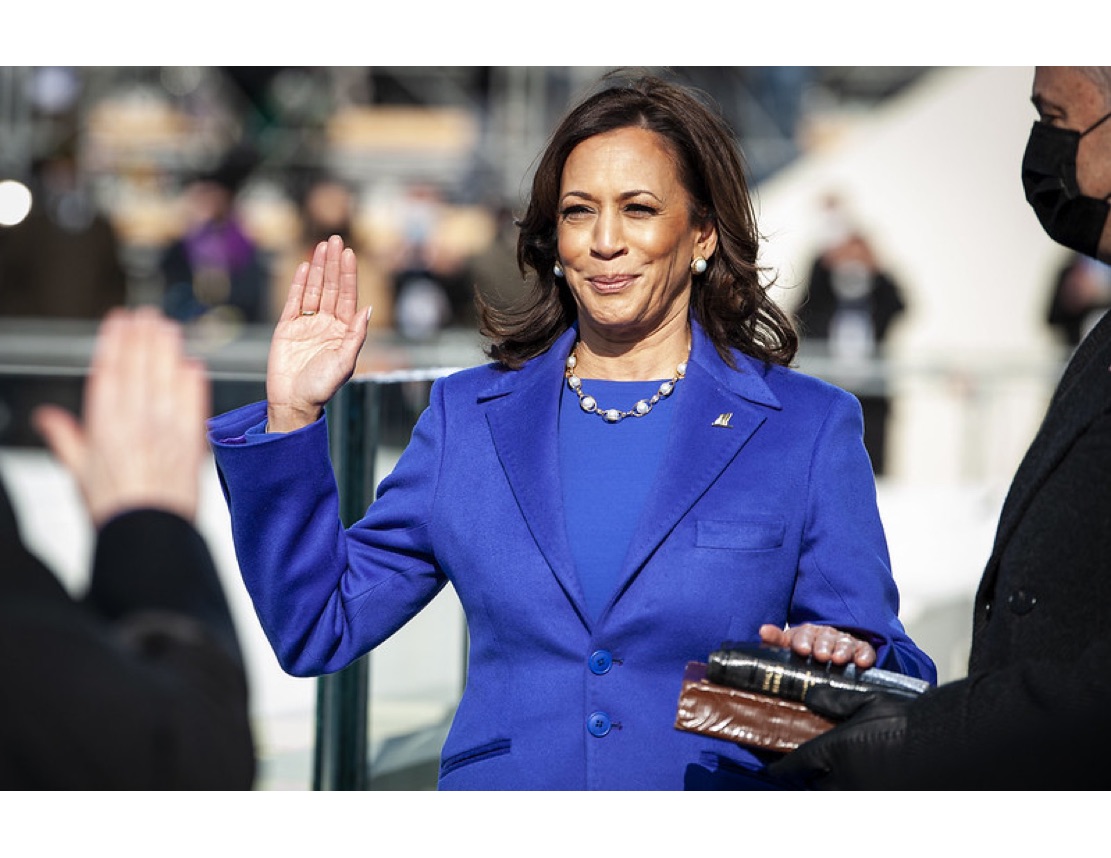Kamala Harris is the first woman and woman of colour to ascend as the United States’ Vice President, the second highest office in the country. Harris is an Indian-American and Black woman, paving the way for all Black and Brown women across the United States and North America to rise to similar leadership and excellence.
The election of Harris to Vice President symbolizes a great triumph for women of colour in politics and law. Women of colour, for the first time, see themselves represented in a position from which we have been excluded for so long, a position the door to which has been bolted shut with a heavy metal lock. For Black and Brown women in politics, the glass ceiling is more akin to a cement barrier requiring the force of a sledgehammer. This barrier has slowly been chipped away at by centuries of incredible women and Harris is the first to step through into this office of the Vice-President of the United States.
Harris’ ascendancy to the Vice-Presidency represents validation of Black and Brown women, such as myself, who have continually faced racial injustice. And while we have seen Black and Brown leaders rise to the Senate and reclaim space in Congress, there is something different about Harris’ win. Something that represents hope—a hope for the future, a hope for women all around the world, and a hope for myself, a woman of colour in higher education, politics, and law.
This is the turning point
Women of colour have always been, and continue to be, excellent political candidates that bring a much-needed voice to politics in countries such as the United States. This is illustrated by the continually growing number of women of colour politicians such as Alexandra Ocasio-Cortez, Ilhan Omar, Rashida Tlaib, and Ayanna Pressley of The “Squad”. These leaders are working with the Biden-Harris administration, pushing for progressive policy such as the cancelation of student loan debts, climate change, and the raising of the minimum wage. It is clear that women of colour in politics have the power to lead democratic change that is actually representative of the people these institutions claim to speak for.
As a Canadian woman of South Asian-Indian and East African decent, a second-generation immigrant woman, and an Ismaili-Muslim woman, I have seen how we (women of colour and minority women) can embody positions of power. I have seen it through my community. I have seen it through my grandmother who came to Canada with her children so that they would receive a better education. And I have seen it through my mother, who, as the first woman in my family to attend university (and having graduated magna cum laude at the University of Ottawa, no less), continues to represent everything I strive to be.
In Harris’ victory speech she spoke of her mother, Shyamala Gopalan Harris, and she paid tribute to the generations of women who have come before her and I. “While I may be the first woman in this office, I will not be the last,” she said to the roaring crowd of women watching her, who will continue to look up to her and stand behind her. As I struggle to motivate myself to get up and attend classes on my laptop during yet another online semester, I found inspiration in her words. And while the world is experiencing extreme uncertainty right now, I am certain that there is a future where women like me can enter into politics and law without hesitation, moving past the barriers of systemic racism and sexism in our justice and political systems.
Nevertheless, Harris’ victory points to a larger social issue. Women continue to be dramatically underrepresented in high-ranking positions within politics (especially women of colour). The political representation of minority women is dramatically lower than that of white women. This is because women of colour face barriers associated with both sexism and racism, making it more difficult for them to reach high offices within the political arena. Harris is certainly no exception.
Throughout the entirety of Harris’ campaign, she endured blunt attacks by right-wing politicians who ridiculed her by deliberately mispronouncing her name, and experienced frequent verbal abuse from former United States’ President Donald Trump. For example, Trump has referred to Harris as a radically left “monster,” spreading false rumours that played into racist birther conspiracy theories. And as Harris enters this office, she will be watched more carefully than any Vice President in U.S. history. She will continue to hear this sort of ridicule and be scrutinized for her ambitions.
Regardless, this new year marks the highest number of women to be elected to the U.S. Congress (both the House and Senate): 144 seats, or about a quarter of Congress. This is a historic increase for all women and is long overdue.
As Harris enters the White House, she brings with her a clear vision for the future. This is a future that ensures equitable racial and gender representation. Yet this is only the beginning. Women of colour are being heard. We are calling for justice, representation, and equity. We are speaking for those that have been historically silenced and for those that still remain silenced as a result of racist and sexist institutions. We need these voices to be heard and amplified — and this will be Harris’ legacy.
Edited by Yu Xuan Zhao.
Photo Credits: “U.S Vice President Kamala Harris takes Oath of Office on the platform of the US Capital during the 59th Presidential Inauguration in Washington D.C.”, Jan. 20, 2021, by U.S Air Force Senior Airman Kevin Tanenbaum, in the Public Domain. No changes were made.


